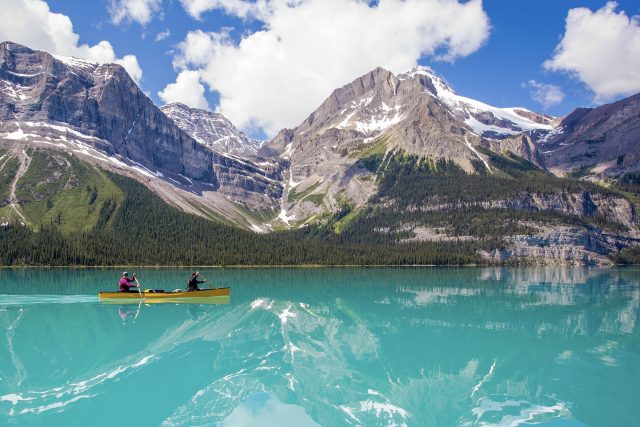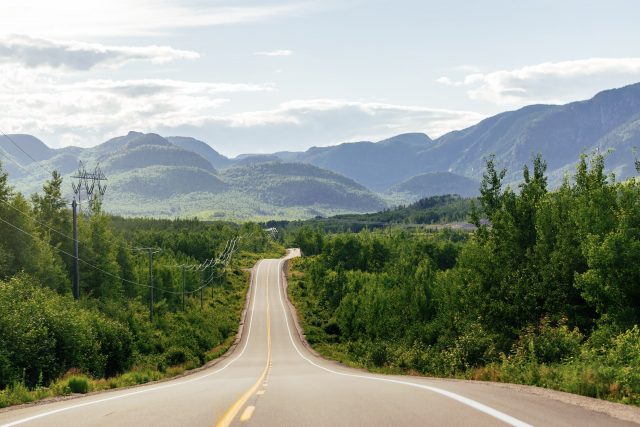How to (safely) watch wildlife in Canada
Posted April 11, 2019 in How to
Tips for watching wildlife in Canada
Every year there are reports of wildlife-watchers getting far too close to Canada’s tooth-and-claw critters. From families trying to cuddle roadside bear cubs to selfie-snappers barging into the personal space of unamused bison – plus those people who think that running towards an elk with their camera poised is somehow appropriate – it can seem that our wilderness is jam-packed with people whose chief knowledge of animals is from TV cartoons.
But if there’s one thing that’s sure to annoy the locals, it’s yet another media report of an ill-informed visitor needlessly (and dangerously) bothering the regional wildlife. Whichever part of Canada you plan to visit on your trip, make sure you’re not one of those people. And if you need a handy primer on critter etiquette before you arrive, read on for our golden rules on how best to interact with a group of Canadian residents that might just bite back (or worse).

Don’t feed the animals
Many rolled their eyes at recent reports of two road-tripping buddies who allegedly handfed hot dogs and doughnut pieces to some young bears they spotted in northern British Columbia. But it wasn’t just the act itself that caused a stir; it was the fact that they apparently uploaded images of their hackle-raising shenanigans to social media as if they thought it was cool.
Two key points: feeding wildlife can be dangerous to you, but it’s even more dangerous to an animal that may quickly become habituated to human food. This can lead to aggressive behaviour as the critter searches out additional supplies of maple cream doughnuts and, ultimately, has to be relocated or even destroyed by wildlife managers.
Stay in your car
Wildlife-watching traffic jams are common in Canada’s most popular national parks, with drivers often pulling-over en masse to gawk at elk, bears, bighorn sheep or other beady-eyed fur-bearers they might spot alongside the road. And while sensible animal fans remain in their cars to watch the spectacle, others feel the need to hop out for a closer look or a better camera angle.
Do not copy their actions; it’s a huge mistake. Use the zoom on your camera (rather than your legs) to zero in on a better shot. Approaching wildlife in their habitat can be extremely dangerous– especially for the animal, which may panic and run straight at you or into the road. Ever wondered how fast grizzly bears can move? You don’t want to find out.

Give them space
Hikers need to be aware of the animals they might encounter on the trails they’re checking out. Do some research on the region you’ll be exploring and be ready to look for any notices at the trailheads: recent wildlife spottings are often posted here. The same rules apply to any animals you encounter en route: give them a wide berth and let them go about their business.
Wildlife encounters aren’t limited to wilderness regions, though. Bears (usually black or brown) can sometimes be found in built-up areas, while racoons make regular appearances among photo-snappers in places like Vancouver’s Stanley Park, where they may scavenge in bins or beg visitors for food: do not feed them or pet them, no matter how cute they look.

A special note on bears: if you’re on a trail in a known bear area (don’t forget to bring your bear spray), be sure to make some noise en route. This lets animals know where you are and gives them a chance to avoid you––which is exactly what they want to do. If you see a bear on your trail, remain calm: screaming may trigger an attack from a panicked animal. Speaking calmly but firmly to the bear helps it see that you are human. If it knows you’re human, it won’t be interested in hunting you. Back away slowly, since running may trigger an attack. For additional information on bear encounters, visit the comprehensive Parks Canada page.
Do you have any tips for wildlife-spotters visiting Canada? Share your memories, photos and videos via Facebook or Twitter or tag us on Instagram.








